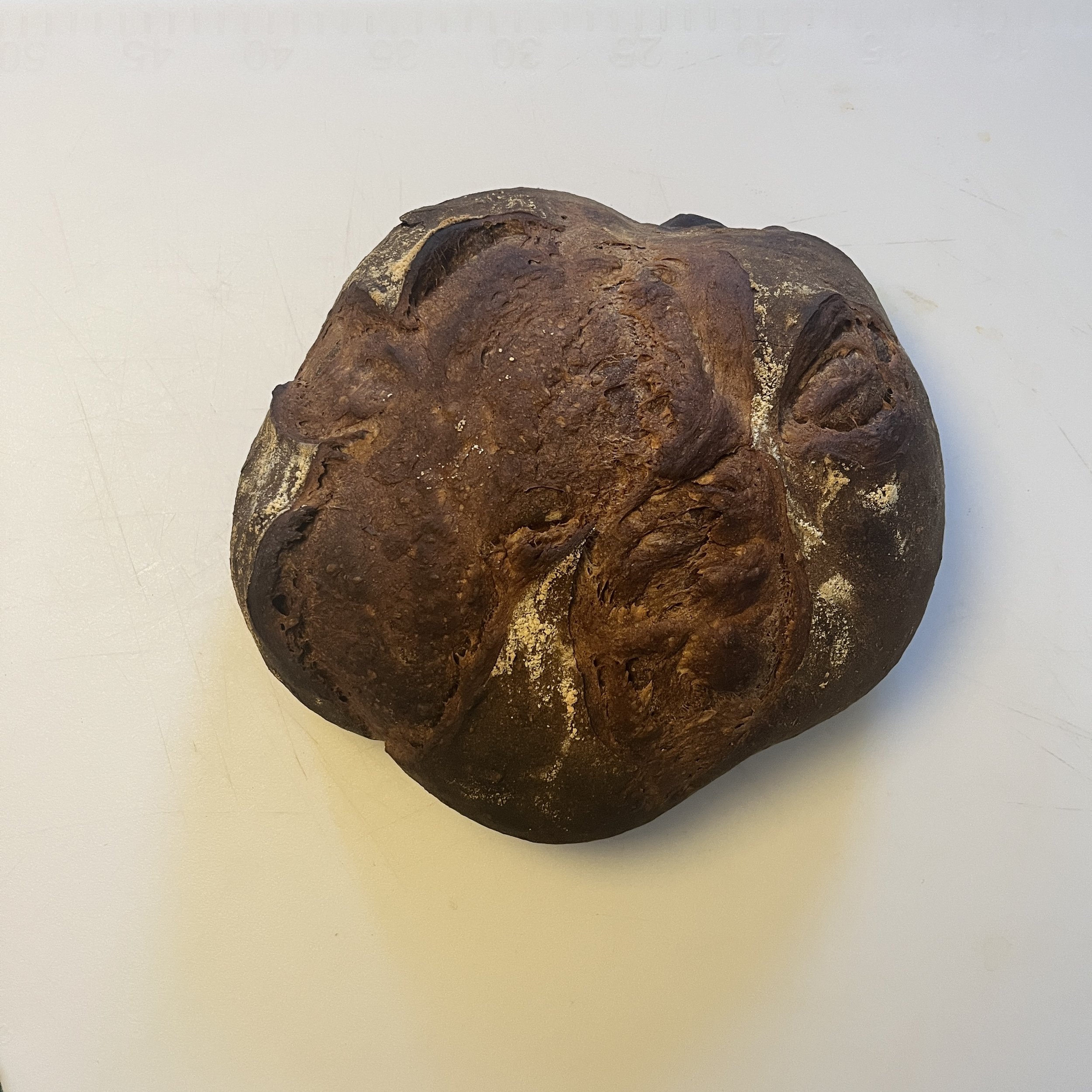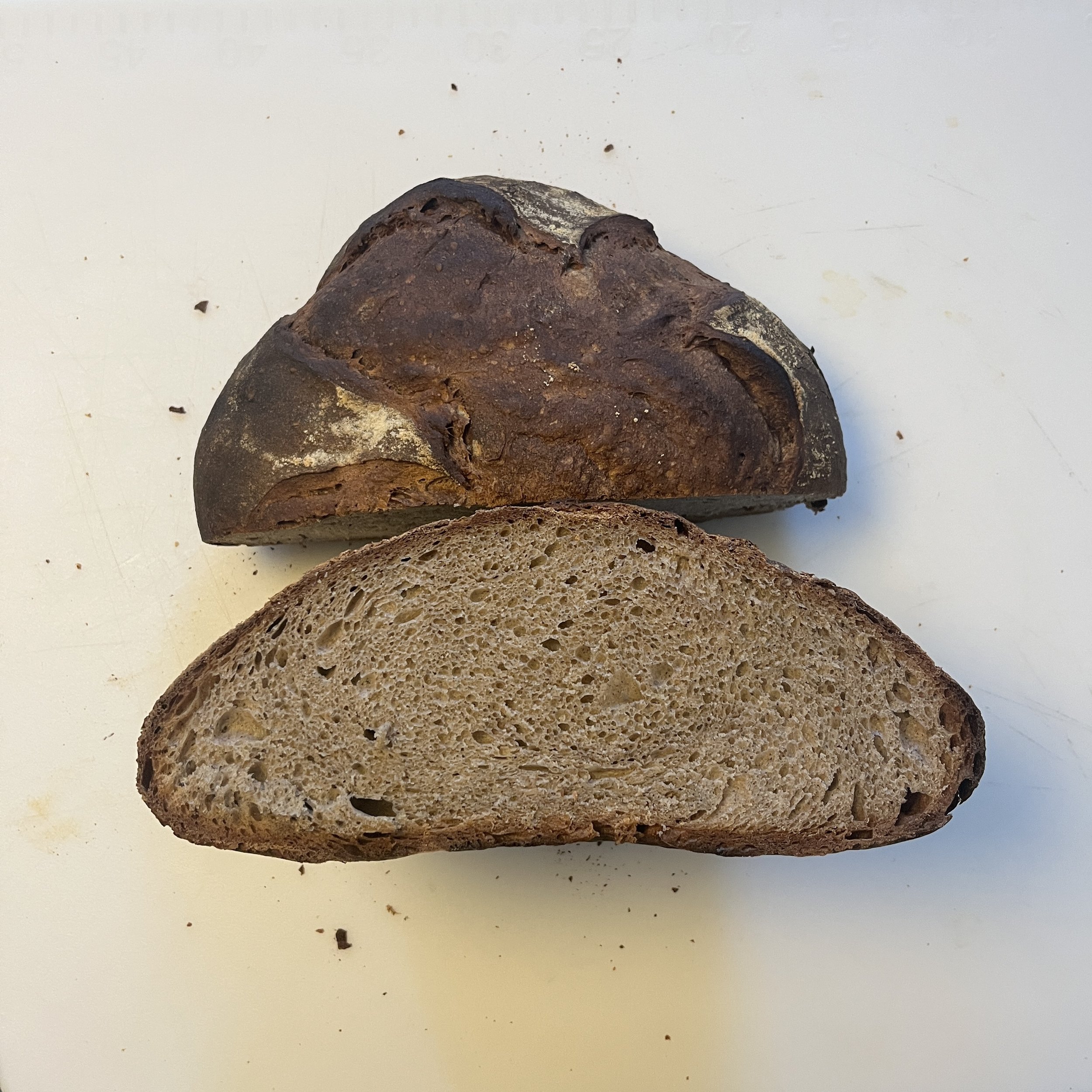The Good, the Bread, and the Ugly
Leaning into the overnight auto-lyse, I started the levain and auto-lyse at the same time, around 9 pm, then let it run until 8 am the following morning. At 8 am the next day I mixed the levain into the dough, waited a beat, then mixed in the salt. I let it rise in the oven with the light on, after about 10 hours I turned, waited 20 minutes, then folded the loaf, set it in the floured banneton, and let the final prove go for another hour while the oven pre-heated. Because of how soft the dough was, when I dumped it out of the banneton and cut it with a razor it made super wide cuts, the dough falling apart, as seen in the photo above.
I baked for 25 minutes at 475°, removed the top, then baked another 25 minutes at 475°. And then I left it in the oven for another two hours to cool with along with the oven.
Dough
240 g bread flour (King Arthur Brand Organic)
240 g whole wheat flour (King Arthur Brand Organic)
100 g all purpose flour (Kirkland Brand Organic)
60 g rye flour (Bob’s Red Mill Brand)
60 g buckwheat flour (Bob’s Red Mill Brand)
600 g h2o
86% hydration
15 g salt
Levain
15 g starter
50 g all purpose flour (Kirkland Brand Organic)
50 g water
What I did right:
Letting the auto-lyse run overnight was really helpful, the following morning the dough was a lot softer than it would have been had I mixed the water and flour then, even with room temperature water during the auto-lyse.
What I did wrong:
Well clearly I baked it way too long, but also the hydration was super high and as a result I manhandled it a little, its sticks, and relatively heavy, and the crumb is noticeably denser as a result.
What I learned:
Overnight auto-lyse is great, and helps to a degree with higher hydration loaves, but with it’s no silver bullet, 90% hydration is still very malleable.


